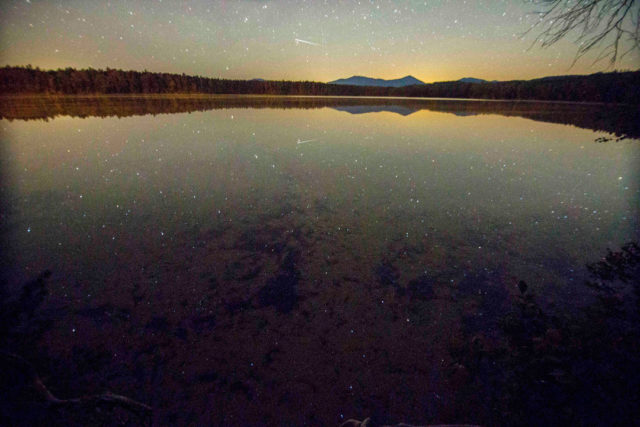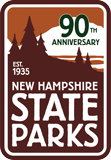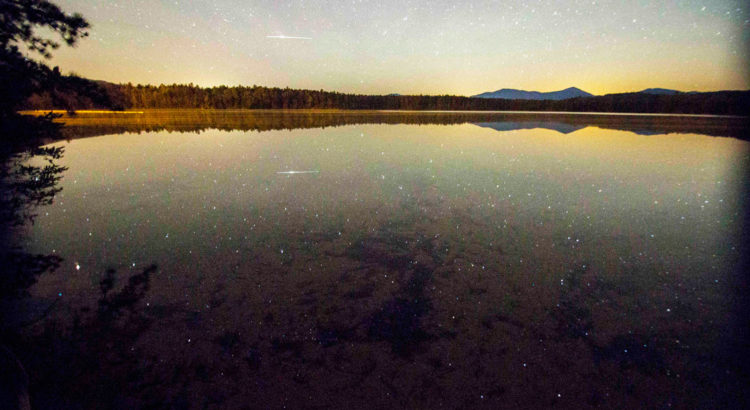Written by Matt Pyster, Student Conservation Association Interpretive Ranger at White Lake State Park.
What is a camper’s favorite kind of shower? A meteor shower!
Now that I’ve set a nerdy atmosphere…in just a few days around we will enter the peak of the Perseids meteor shower (around the 12th/13th of August). Space is a big and beautiful place, and even those people who do not spend countless nights looking at stars are pulled to spend one night watching these cosmic light shows. But what exactly are they? I do a star program each Saturday at White Lake State Park, and figured I should know a bit more about them. Here’s what I found….

(Image: © Christopher Georgia | CMGFoto.com | Facebook: CMGFoto )
Q: What are shooting stars?
Well to answer that, I need to say what meteoroids and asteroids are. These are pieces of dust or rock flying through space, and range in size from the size of a piece of dust to rocks miles across. These pieces of space debris are constantly slamming into various planets and moons, and seeing as they can be traveling at speeds of up to 160,000mph they can pack quite a punch. Happily, our atmosphere protects us from the majority of them, acting as a sort of air brake. As our planet is one of those with an atmosphere, instead of slamming into our surface the objects slam into air! This causes such intense friction that they can heat up to 3,000 degrees Fahrenheit, or 1,648 Celcius (significantly hotter than lava!). A similar effect happens to the space shuttles when they return from orbit. Such an intense heat causes two things to happen. First, the air around the debris gets heated until it literally glows, producing the “tail” of the shooting star. Secondly, the object gets heated up until it begins to vaporize, or essentially disintegrate. When a meteoroid hits the atmosphere and starts to burn up, it is considered a “meteor”. Most of the time the space debris does not make it to the ground, but sometimes they manage to make contact. A famous example of this is the Chicxulub asteroid, which is responsible for decimating the dinosaurs 66 million years ago. This was a massive asteroid that was 6-9 miles across, and is not likely to be repeated any time soon (phew). Less famous (and much smaller) examples include the meteorites that lucky people find and keep as a personal connection to outer space. I personally would die of happiness if I found one!

(Image: © Christopher Georgia | CMGFoto.com | Facebook: CMGFoto )
Q: So what are meteor showers?
Meteor showers are when there are large numbers of shooting stars visible. They are usually caused when earth passes through the debris left behind a passing comet. Comets are icy space objects that orbit the sun, and are formed from frozen gases, ice, and small pieces of rock and dust. When these comets pass close to the sun they start to turn from solid to gas, leaving a trail of freed dust and rock in their wake. Earth passes through these trails at predictable times, and all of that space debris becomes shooting stars as it enters our atmosphere. The name of meteor showers simply tells us what area of the sky the shooting stars will be coming from. They can appear anywhere in the sky, but if you trace all of their trails, they will point to one general area of the sky. We name the shower after whatever constellation happens to be in that area. In the case of the Perseids meteor shower, this would be the constellation of Perseus.
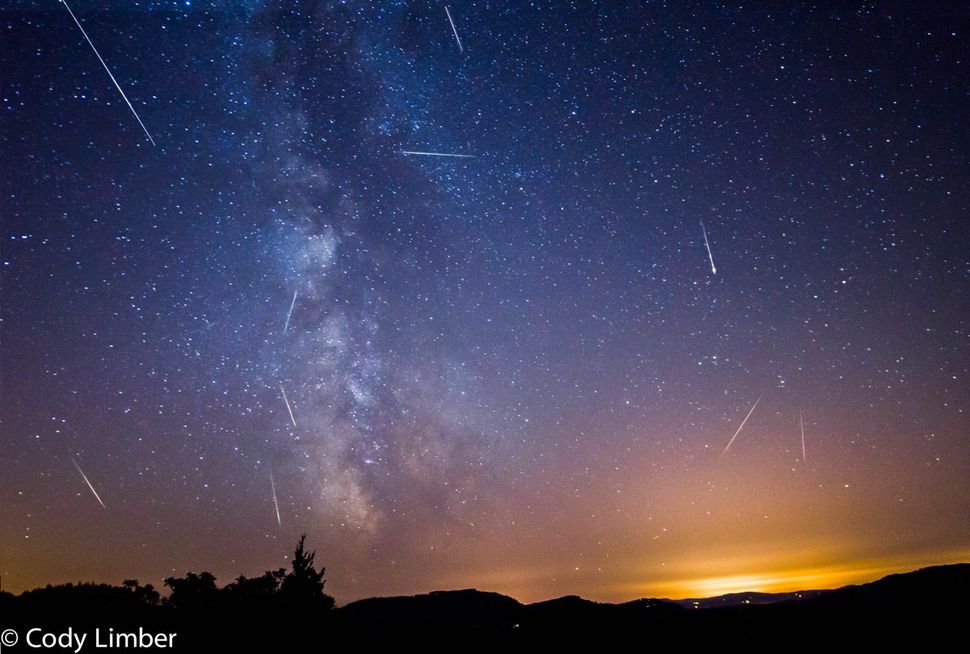
Q: What did people used to think about shooting stars?
Well, until the 1800’s the general scientific community refused to admit that meteorites (the meteoroids that actually make it to the surface of earth without fully burning up) came from space. They pretty much just said that the common folk were making up stories of rocks falling from the sky. That was until 1803 when the L’Aigle meteor hit France, with meteorites aplenty, and enough witnesses that no one could deny that the rocks came from space. Before that, shooting stars were symbols of communications from the gods or supernatural events. To the Blackfeet tribe of Montana, a meteor was a predictor of sickness or loss of a leader. For Christians, the Perseid shower was not rocks from space, but instead the immortal tears of St. Lawrence who had become a religious martyr almost 2000 years ago. In Rome, a comet seen after Julius Caesar was murdered signified that he had ascended to become a god. A coin memorializing this belief was actually made in ancient Rome!
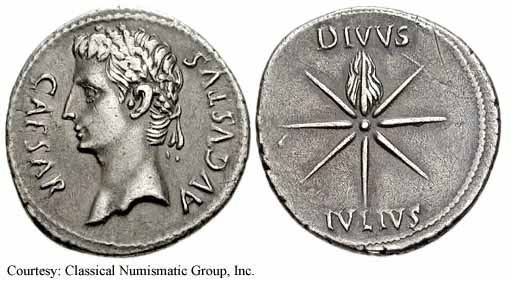
Q: Are we in danger of an asteroid wiping us out?
Not likely. Years ago there was some fear about an asteroid cutely named after the Egyptian god of Chaos, Apophis. Now Apophis travels VERY near earth in its orbit, and scientists thought there was a chance it might hit earth causing serious damage. Fortunately new calculations show that we are safe, at least for the foreseeable future.
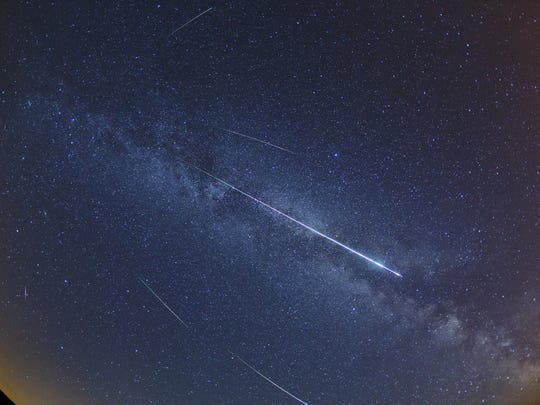
Q: Where can I see them?
Well, light pollution is a nuisance to viewing the night sky. Cities often produce large amounts of light that take away the experience and resource of the night sky. Traveling out to a state park, or similarly dark environment away from cities and bright lights will help you view as many shooting stars as possible. Unfortunately for this coming meteor shower, the full moon will be present and shining brightly around the same time as the peak of the Perseids. This will make it harder to see many of the dimmer shooting stars, but you should still get a nice show with around 15-20 visible shooting stars per hour. On any NORMAL day at White Lake State Park you can see the milky way as well as at least one shooting star – imagine what we will see during this meteor shower. Better yet – come out, see for yourself, and stay for my star talk from 9:30-10:30pm this Saturday. It’s out of this world!
